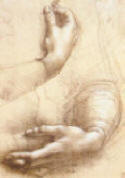BIO211 Weekly Guide #11
DEVELOPMENT

After completing this laboratory you should be able to:
1) Distinguish between embryological and fetal developmental stages
2) Describe the sequence of embryological processes, steps, and stages including fertilization, early cleavage, morula, blastocyst, gastrulation and gastrula, neurulation and neurula, and organogenesis
3) Describe the major features of fetal development and feto-maternal hormonal control during each of the three trimesters of pregnancy
4) Describe in sequence the major events and processes occurring during labor and birth
Guide to Gross Anatomy Guide to Histology Guide to Physiology
Outline
I. Overview
A. Pregnancy and Gestation [FAP 29-2, 29-3]
first trimester
fertilization through early organogenesis
implantation
development of placenta
HCG from chorion supports corpus luteum of pregnancy
development of placental circulation
second trimester
completion of organogenesis
fetoplacental unit
produces estrogen and progesterone
maintains uterine lining
third trimester
fetal growth
maturation and functionality of organ systems
viability of fetus
B. Development Overview [FAP 29-1]
fertilization and implantation
multiple embryos/births
dizygotic/polyzygotic
monozygotic
monozygotic developmental anomalies
sinus inversus
conjoined twins
fetus in fetu
embryogenesis
fetal development
parturition
postnatal development
puberty
C. Aging and senescence
II. First Trimester
A. Fertilization [FAP 29-2]
ovulation
migration through oviduct
sperm contact and penetration
blocks to polyspermy
early cleavage
morula and blastocyst stages
B. Implantation and placental development [FAP 29-4; Table 29-2]
endometrial contact
gastrulation and gastrula
extraembyonic membranes
yolk sac - blood cell and vascular formation
amnion - surrounds amniotic cavity
allantois - urinary bladder and waste storage
chorion -vascular development for nutrient exchange
placenta
develops from maternal enometrium
vascularization
chorionic villi
C. Hormones
HCG - human chorionic hormone (FSH & LH analog)
Estrogen and Progesterone - the "feto-placental unit"
HPL - human placental lactogen (Prolactin analog)
relaxin
D. Embryogenesis
neurulation and the neurula
organogenesis and the pharyngula
sexual determination and differentiation - beginning week 6
II. Second and Third Trimesters [FAP 29-5]
A. Completion of organogenesis
B. Fetal growth
C. Quickening
first pregnancy - detectable at 18-20 weeks
subsequent pregnancies - detectable at 15-17 weeks
D. Maternal changes
increased RR and TV
increased BV
preeclampsia
increased nutritional requirements
increased GFR
uterine growth
mammary gland development
III. Labor, Delivery, Parturition [FAP 29-6]
A. Orientation of fetus
B. Onset of labor
placental estrogen increase
endometrial prostaglandins
myometrial sensitivity/excitability increase
oxytocin release - fetal and maternal
placental relaxin
C. Stages of labor
dilation stage
contractions every 10-30 minutes
dilation and effacement of cervix
descent of fetus through pelvic inlet
rotation of fetal head
rupture of amnion
complications/interventions
fetal monitoring
premature labor
induced labor
expulsion phase
completion of cervical dilation
passage of fetus through cervix and "birth canal"
rotation of fetal head and shoulders
complications/intervention
episiotomy
nonideal presentations - face, brow, shoulder, breech
placenta previa
forceps delivery
cesarian section
placental phase
decrease in uterine size
detachment and delivery of placenta
endometrial vasoconstriction
the "umbilical transfusion"
complications/intervention
Iplacenta accreta
post partum bleeding/hemorrhage
IV. Neonatal Period [FAP 29-7]
A. Maternal
lactation
development of lactiferous glands and ducts - E, P
milk production and "letdown" - prolaction
colostrum
milk ejection - oxytocin
postpartal hormonal changes
B. Fetal
lungs
circulatory pattern changes
ductus arteriosus -> ligamentum arteriosum
foramen ovale -> fossa ovalis
umbilical arteries -> lateral ligaments of the bladder
umbilical vein - > round ligament of the liver
heart rate 150->130 bpm
fetal-to-adult hemoglobin transition
digestive system activation - meconium
urinary system activation
incomplete thermoregulation
V. Maturation and senesence [FAP 29-7]
A. Infant growth
B. Puberty
hormonal triggers
increased GnRH production and sensitivity ->
increased FSH, LH production ->
gonadal maturation ->
increased E,P,T ->
primary and secondary sexual characteristics
growth rate increase, then fusion of epiphyseal plates
production of gametes
initiation of ovarian/uterine menstrual cycling
C. Senescence
molecular/cellular changes
reduced organ system functionality
menopause and andropause
Gross Anatomy List
Be able to recognize the major structures of the female reproductive tract in the pregnancy model series.
Review the fetal fontanels in the three model skull development set.
Guide to Gross Anatomy
The PBS/NOVA video "Life's Greatest Miracle" is a good introductory overview of pregnancy, prenatal development, and birth. Watch it at http://www.pbs.org/wgbh/nova/body/life-greatest-miracle.html.
Fertilization and Implantation
1) Define each of the terms in APL Pre-Lab Exercise 28-1 in the lab text.
2) Work through the three "Time to Trace" steps in APL Exercise 28-1 to follow the sperm and egg through production to fertilization to implantation at the blastula stage.
Placenta and Fetal Membranes
1) Use the set of five pregnancy models to complete APL Table 28.1 in the lab text. Find as many of the listed structures as you can.
2) Complete APL Pre-Lab Exercise 28-2 in the lab text, using APL Figure 28.5 as a guide. This is a good review of the interaction between fetal membranes and the placenta.
First Trimester
1) The Carnegie Stages describe the developmental timeline and sequence for the first 6 weeks, covering the transition from embryo to fetus. Use the interactive Visible Embryo website at www.visembryo.com/baby/index.html to assign a Stage # and developmental age to each of the five fetal images provided.
2) Work through the interactive website at www.pbs.org/wbgh/nova/body/how-sex-determined.html to review gonadal differentiation and development, starting at about week 6. Follow up by reviewing the origins, determination factors, and differentiation of internal and external genitalia during early fetal through adolescent development.
Second and Third Trimesters
1) Try to assign a developmental age to the embryo/fetus in each of the five models in the pregnancy set, using interactive Visible Embryo website at www.visembryo.com/baby/index.html as a guide. If you are using fetal length measurements, treat the models as 80% scale (4" on the model represents 5" in a typical fetus).
2) Review the approximate gestational times for the following landmark events/processes:
quickening
rotation of the fetus into the head-down position
descent of the fetus into the true pelvis
Parturition (Birth)
1) Review the changes that take place in the fetal circulatory system immediately following birth. Complete APL Pre-Lab Exercise 28-3 in the lab text, using APL Figure 28.6 as a guide.
2) Work through the interactive exercise at www.pbs.org/wbgh/nova/body/anatomy-childbirth.html to review the childbirth process.
Guide to Histology
There is no new histology for this topic.
Guide to Physiology
There is no formal physiology exercise with this lab.
